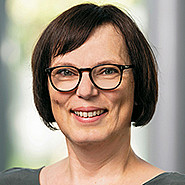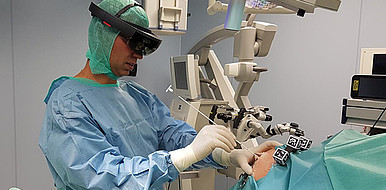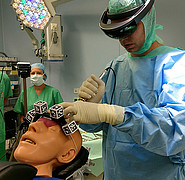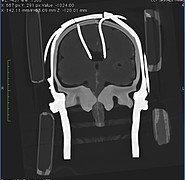Making the head glassy with augmented reality
High pressure in the brain, e.g. due to brain hemorrhage or trauma, can lead to irreparable damage. To prevent these consequences, a surgical procedure is applied to puncture the ventricular system in the brain, thus reducing the pressure by removing fluid.
State of the art
Until now, patients have relied entirely on the skills of the surgeon to carry out this brain surgery. During surgery, only the surgical area on the skull is exposed, so surgeons cannot orient themselves visually, for example by looking at the nose, to determine puncture sites. They use two-dimensional CT images and haptic conditions to determine the insertion points of the instruments, the Kocher points, as well as the trajectory, the optimal puncture path.
Technology
At the Institute of Anthropomatics and Robotics (IAR) of KIT, a system has been developed to process information from CT images in such way that it can be projected onto the head of the operated person using data glasses. The information in the field of view thus supports the surgeons in determining the puncture site and angle. For this purpose, existing CT images are converted into 3D models by conventional image processing. The individual model is computed in just a few seconds. By overlaying the individual patient model with the statistical average, the ideal positioning of the Kocher points in relation to the trepanation on the one hand and the relevant injection points on the other can be visualized. Using data glasses, these points are displayed three-dimensionally on the skull and provide orientation in the surgeon's field of view.
Advantages
Tests on head models have shown that virtually assisted puncture is 10 percent more accurate. This means less risk of damage and more treatment safety for surgeons. The learning curve is also enormously steep, especially for younger surgeons, due to the visual guidance, as the perfect path of the instruments is shown. Compared to other methods, the method convinces with the immense speed for segmentation and model computation.
Options for companies
KIT is looking for partners from the field of medical technology to achieve market maturity as well as for adaptation to other operations.
Your contact person for this offer

Innovation Manager Mobility and Information Karlsruhe Institute of Technology (KIT)
Innovation and Relations Management (IRM) Phone: +49 721 608-28460
Email: birgit.schulze@kit.edu



